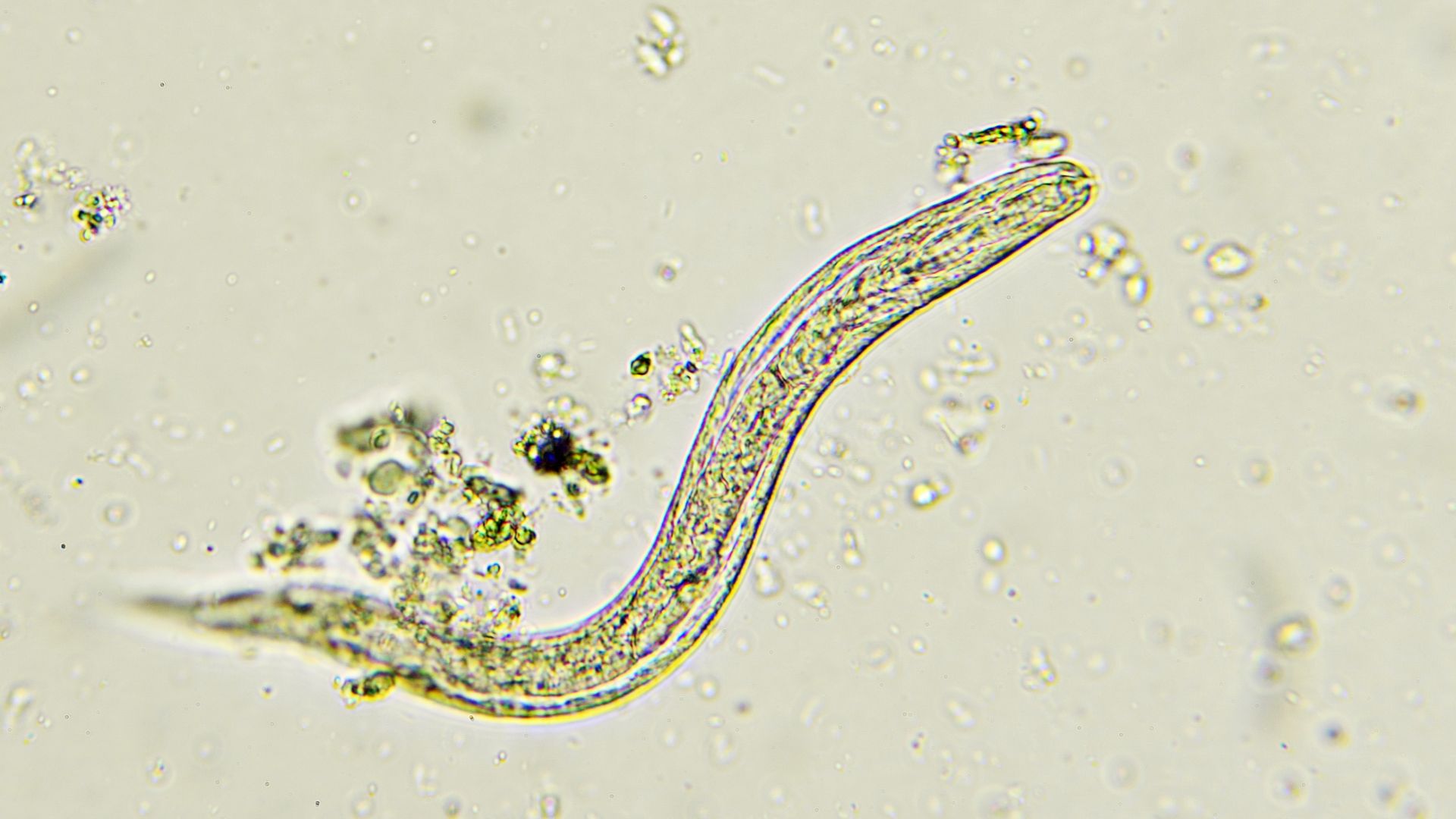Some impressive cases of parasitic worm infections sometimes make headlines. Recently, a worm was removed from the brain of an Australian woman. These spectacular cases are rare. On the other hand, there are many common parasitic infections. It is important to be aware of this and not to forget the hygiene recommendations.
A living, 8 centimeter parasitic worm has been removed from the brain of a woman in Australia. This surgical operation, a first of its kind, made the rounds of the media at the end of August 2023, after the publication of the case study in the scientific journal Emerging Infectious Diseases.
It was a brain scan that allowed the worm to be detected. For more than a year, the patient suffered from gastric symptoms, cough, night sweats, memory problems, depression. After several hospitalizations, the scanner is decided, and the worm is detected. It was able to be removed and the patient is fine. However, a question arises: how could this situation have arisen?
Like the worm in question — O. robertsi — lives on pythons, the most plausible theory given is that the Aussie had contact with python eggsO. robertsi through python droppings while collecting edible plants. The ingestion of the larvae would then be in question.
Common parasitic worms exist
This case is extremely rare. In particular, because the brain is generally a well-protected organ. This Australian is immunocompromised: this most likely explains why the larvae were able to migrate to the central nervous system.
However, there are other more common parasitic worms that attack different organs, usually the intestine. This is the case, for example, of pinworm, an intestinal disease, relatively common, especially in children, caused by a whitish worm measuring 5 mm to 1 cm. There is also giardiasis, an intestinal infection also caused by a worm. To be infected by this type of worm, it generally passes through contact with food on which eggs would have developed (giardia cysts can be found on food eaten raw or undercooked), or else by human transmission -human. Toxoplasmosis, another parasitic infection, is also caught through food, or contaminated cats.
” Fortunately, these very common parasites do not infect the brain “says gastroenterologist Vincent Ho, in The Conversation. There are many cases of asymptomatic parasitic infection, such as toxoplasmosis. Others, such as pinworms, have more troublesome and problematic symptoms (pruritus ani, vomiting, cystitis, etc.). In all cases, these infections must be treated as soon as they are spotted.
Parasites capable of infecting the brain exist, they are often amoebas, such as Naegleria fowleri, which are found in the waters of warm climates, such as Australia, which can be inhaled through the nose if swimming in them, and then attack the brain. It’s not Really not very common, if only because they only exist in specific places; there are only a handful of cases for Naegleria fowleri (in the United States, there are 145 cases from 1962 to 2018).
4 hygiene tips to avoid these situations
“ We know that it is very rare to be infected with a snake parasite and even rarer to find one alive in a person’s brain. “, adds the specialist. ” But parasites are all around us », which is why he gives 4 tips to limit the risk of infection:
- ” Avoid raw or undercooked pork “says Vincent Ho. Pre-freezing meat can reduce risk (although home freezers are not cold enough) and meat should be cooked to a high internal temperature. What’s more, pork should be specifically avoided when traveling to places where “ the sanitary conditions are insufficient “.
- ” Avoid jumping or diving into cool, warm waters. And, although it seems obvious, it should be avoided all the more if these waters… are known to carry Naegleria fowleri (the amoeba which can infect the brain).
- ” Practice good hand hygiene to reduce the risk of both rare and common infections. In other words, wash your hands regularly, carefully: good daily hand washing corresponds to 20 seconds of rubbing with soap. This means washing your hands thoroughly and often, using soap, before properly rinsing and drying. Always on the hygiene side, it is necessary cut nails and clean them regularly “.
- To avoid soil-borne pests, it is advisable to “ wear shoes outside “, And this ” especially in rural and isolated areas “, explains Vincent Ho. He also reminds us that it is better to leave your shoes outside after this kind of getaway, and not to forget to wash them.
These tips are ultimately fairly classic hygiene recommendations, but, applied to parasitic worms, it reminds us why these gestures are important. They are particularly important to remember in children, who are particularly exposed to pinworms.
Subscribe for free to Artificials, our AI newsletter, designed by AIs, verified by Numerama!
